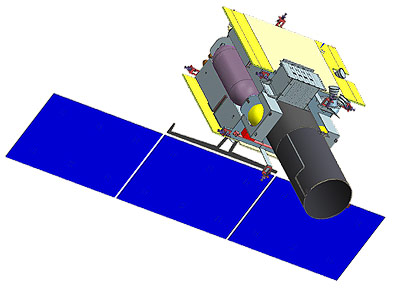The Indian hyper and multi-spectral earth observation satellite, equipped with a SWIR sensor, was put into orbit with a 4-year delay.
Boundary Observations
On March 28, 2021, subject to favorable weather conditions, India will launch its Geo Imaging SATelitte (GISAT-1) satellite from the Sriharikota spaceport. It will be launched by the GSLV F-10 Mk2 (GeoStationary Launch Vehicle) into geostationary orbit 36,000 kilometers from the Earth's equator. The organization in charge of the launch, ISRO (Indian Space Research Organisation) had to postpone the first launch planned in March 2020 for technical reasons. This launch follows Amazonia-1, launched for Brazil on February 28.
GISAT-1
GISAT-1 is an earth observation satellite, which benefits from a 700 mm Ritchey telescope derived from the Indian Cartosat mapping satellite. Its missions will be the continuous observation of the Indian subcontinent and the prevention of risks and natural disasters. It will carry a hyper and multispectral (visible, infrared and thermal) payload with a resolution ranging from 50 m to 1.5 km. It will provide in real time the required images, every 5 minutes for a photo of the subcontinent and every 30 minutes for an image of 50 m resolution. With a life span of 7 years and a weight of 2268 kilos, it will be completed by the GISAT-2 whose launch date has not been revealed.
GSLV
The launcher of GISAT-1, the GSLV Mk 2 (GeoStaonary Lauch Vehicle) allows the carrying of a payload of 2500 kilos in GTO (Geostationary Transfer Orbit) and 5000 kilos in LEO (Low Earth Orbit). With a length of 49.3 meters for a maximum weight at takeoff of 414 tons, it has 4 stages. The 3rd stage of the Mk2 version uses the Indian engine CE 7.5 instead of the KVD-1 M of the Mk 1 version. India is also pursuing the development of the SSLV (Small Satellite Launch Vehicle) whose first launch is scheduled for 2022. With a length of 34 meters and weight of 116 tons, it will carry 500 kilos in LEO and 300 kilos in SSO (Sun-Synchronous Orbit). Assembled in less than 72 hours, it will offer a competitive launch cost.
Découvrez cet article sur Air&Cosmos

